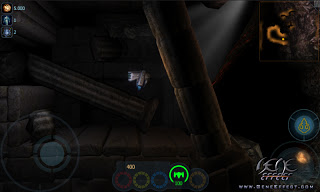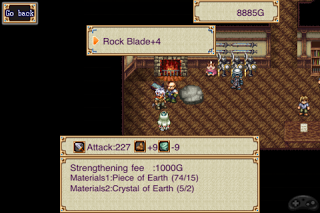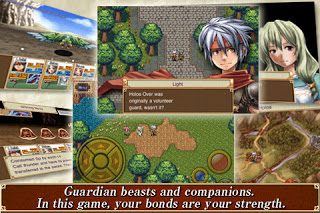Avenger [CWA Games] – $1.99
Number of Results: 95
Each Mission has certain objectives which you’ll need to achieve either before progressing to the next area of a level, or completing the stage. These range from collecting DNA samples, to finding different resources like Koronite (the main orange material which you’ll be collecting a ton of), and taking it to certain drop off areas within the levels, or collecting red, blue, and yellow crystal energy to start up reactors, as well as searching for sensors to unlock doors, and more.
 Lightstorm3D has definitely shown that they know exactly what it takes to make an amazingly immersive, incredibly depthy game with Gene Effect. The story, gameplay, graphics, controls, music, everything about the game really stands out as top-notch. Even without having GameCenter integration with no online achievements, or leader boards, it has a great amount of replay value that will drive completionists batty. Fans of exploration, sci-fi, mining, action, adventure and even puzzle games would do well to get this on their device as soon as possible. Gene Effect is definitely a game that stands out as a true console-like experience in an AppStore full of casual pick-up-and-play flash games. The $5 price of admission is well worth the journey you’ll be privileged to experience, and is highly recommended to all gamers looking for something more from the games on their iDevice. I sincerely hope iOS gamers will be able to see more from Lightstorm3D. It’s games like this that give me hope that the iDevice will grow into a serious gaming platform in the near future.
Lightstorm3D has definitely shown that they know exactly what it takes to make an amazingly immersive, incredibly depthy game with Gene Effect. The story, gameplay, graphics, controls, music, everything about the game really stands out as top-notch. Even without having GameCenter integration with no online achievements, or leader boards, it has a great amount of replay value that will drive completionists batty. Fans of exploration, sci-fi, mining, action, adventure and even puzzle games would do well to get this on their device as soon as possible. Gene Effect is definitely a game that stands out as a true console-like experience in an AppStore full of casual pick-up-and-play flash games. The $5 price of admission is well worth the journey you’ll be privileged to experience, and is highly recommended to all gamers looking for something more from the games on their iDevice. I sincerely hope iOS gamers will be able to see more from Lightstorm3D. It’s games like this that give me hope that the iDevice will grow into a serious gaming platform in the near future.
Summary:
Basically your goal in either of the game modes is to survive and either complete the mission available in the main career mode or get a new high score in the endless mode. At your disposal is your trusty sword which you learn early wont do it when your up against a lot of enemies. The main power force in the game is magical cards which you can use when you walk over them. Once you do so the magical power inside of it unleashes and creates a differing effect based on the card. Think of it like Super Crate Box except with a fantasy setting and cards instead of crates. Dont get me wrong though, this is in no way a rip off of SCB.
Controls: 4/5
The controls on the iPad I used to play it on were sufficient and the only real problems that I had with them were mainly my fault. The game utilizes the generic platformer set up with left/right arrows in the left corner and jump/attack buttons in the right corner with the pause button in the upper right corner.
Gameplay:4.5/5
Really nothing to complain about here, fast paced gameplay, an endless mode, and a neat item shop where you can buy helmets and other assorted items that improve your game. The career mode has you doing missions, in areas that you unlock by obviously completing more missions. There are 20 missions contained in each area and they can range from survinvg a heavy onslaught of enemies for a certain period of time or collecting a certain number of magic cards. The missions are balanced nicely and present a good sized challenge to the seasoned platformer expert.
Graphics: 4/5
The graphics have a really nice look to them. Pixeled except not in a retro way. Though the graphics are extremely similiar to Terra Noctis’ (most likely because it was made by the same company) the areas are all different than the aforementioned game.
Overall: 4.5/5
Overall this is a great game with fast paced gameplay that is extremely addicting. And yes I know addicting is one of those buzz words that you shouldn’t use in a review as it can cheapen it, but this game truly deserves that title. Splendid graphics and music along with overall good design makes this a must have.
Pick it up in the AppStore while it’s still $0.99

